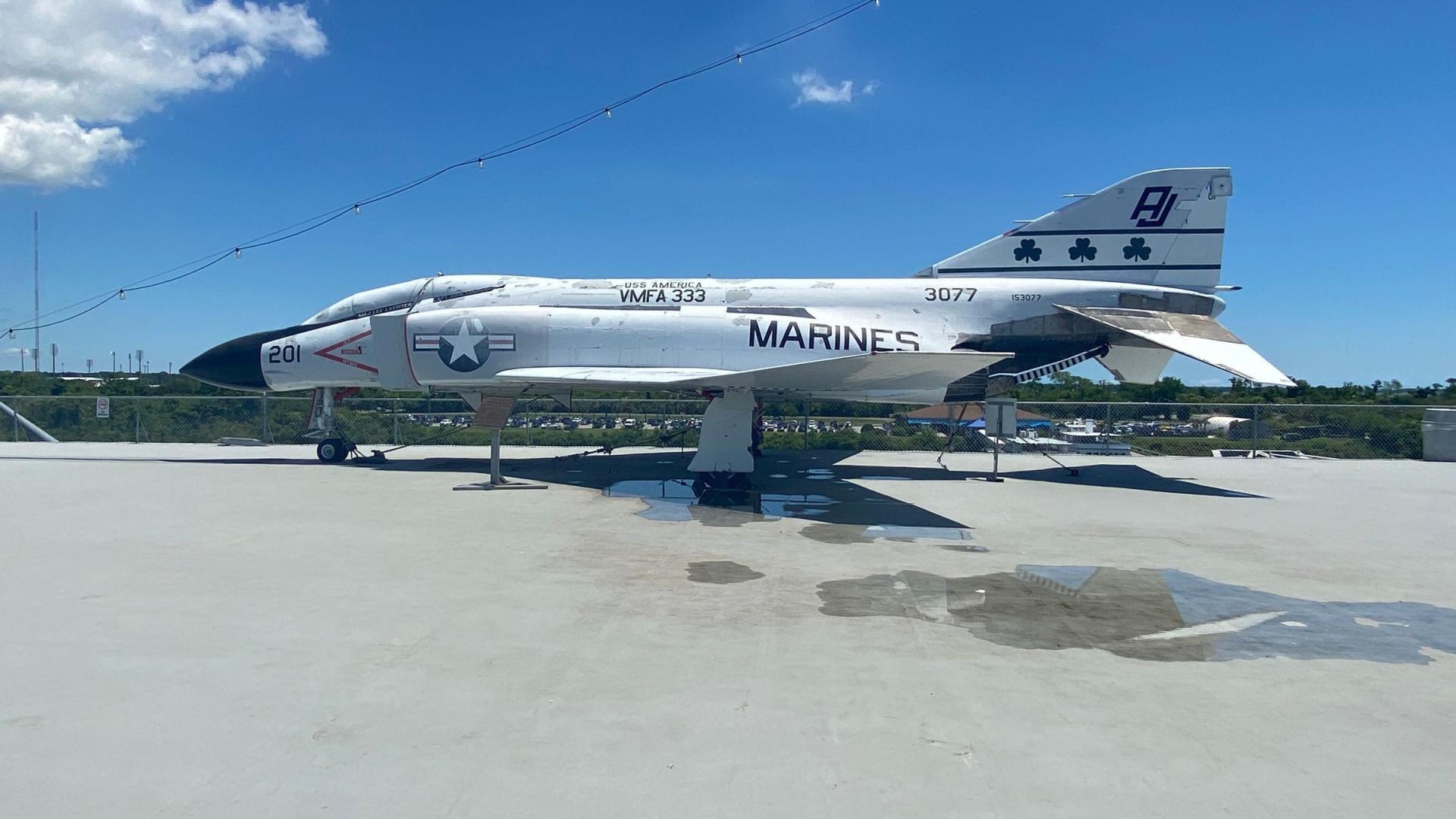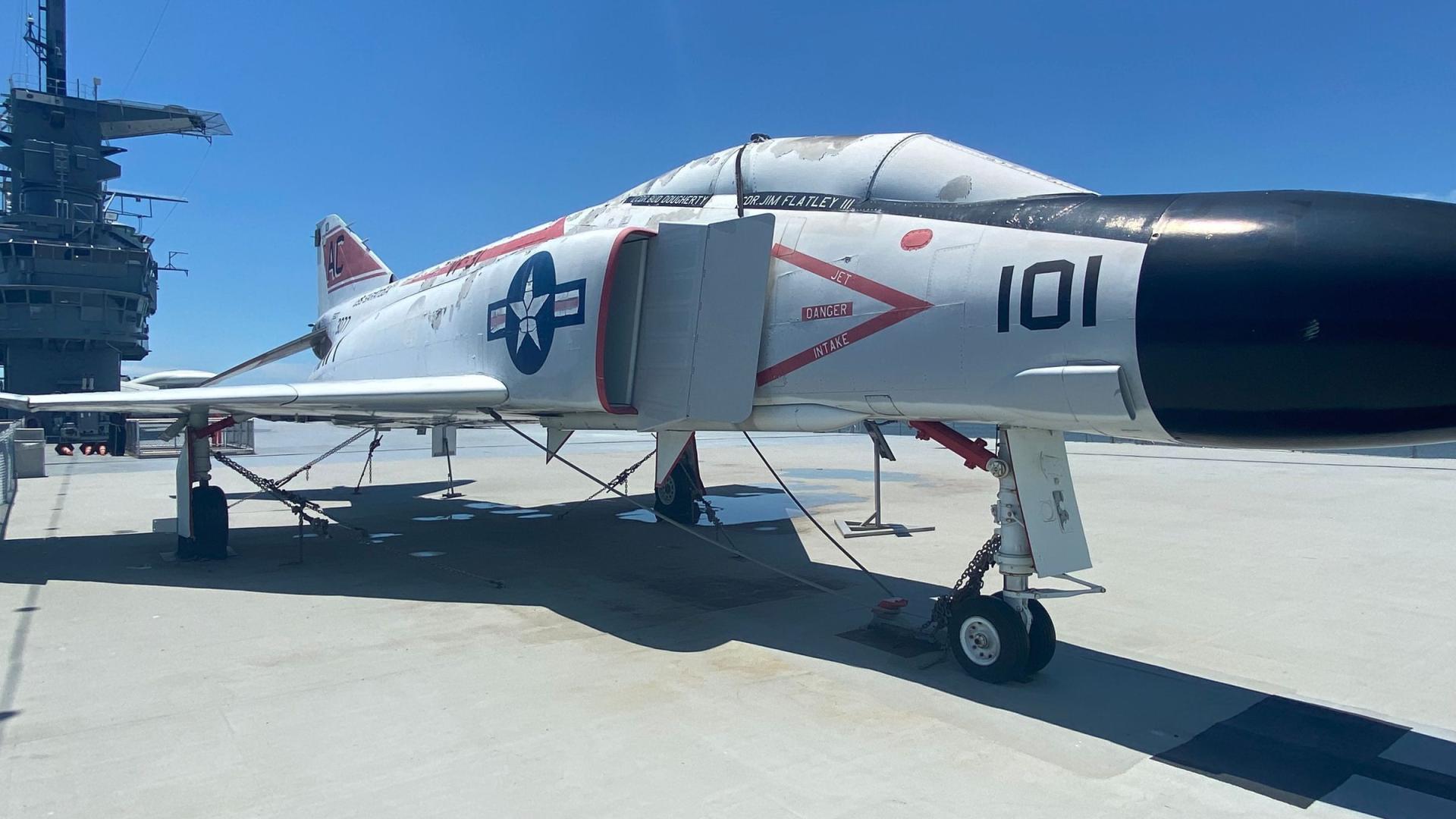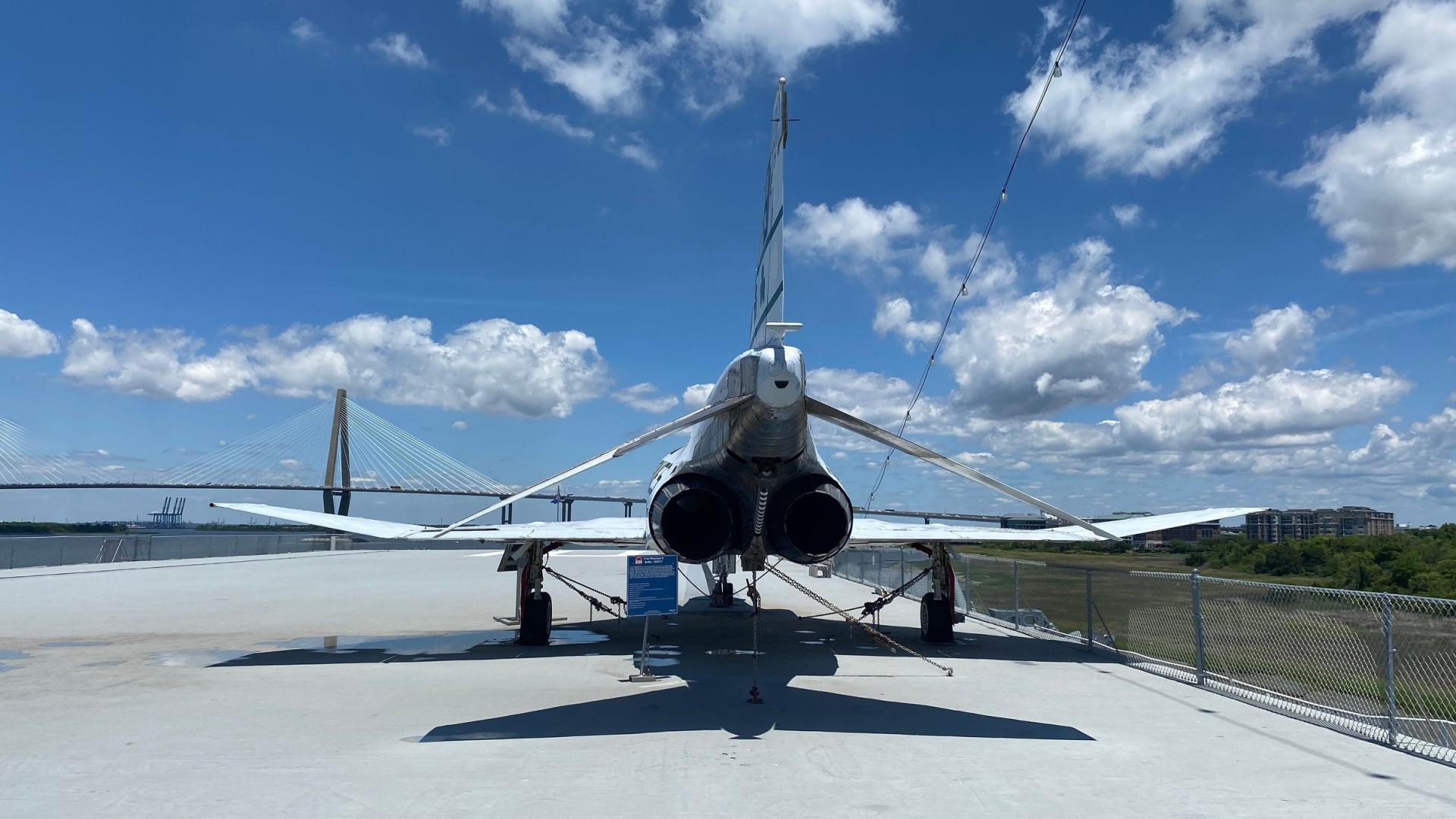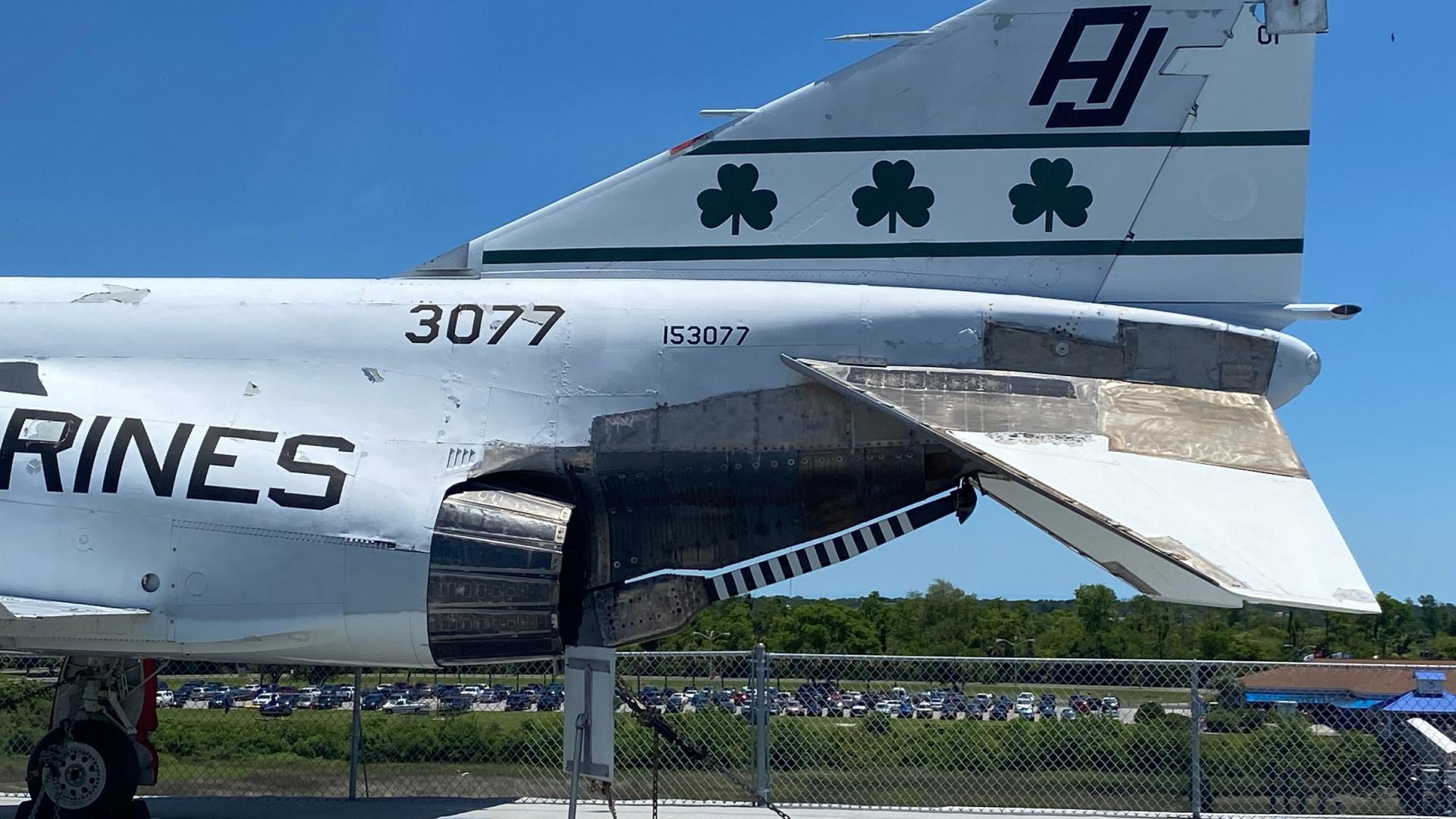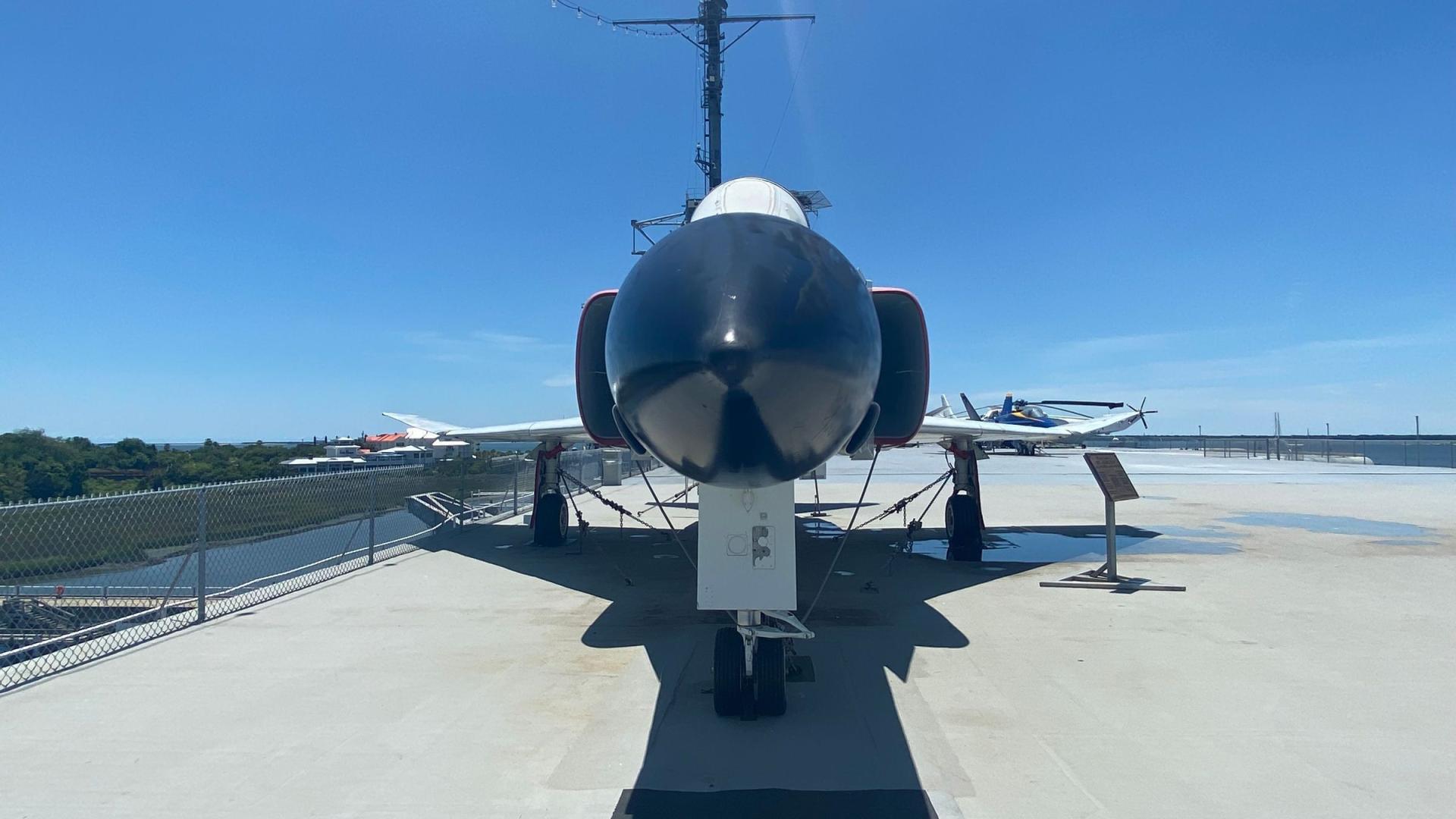F-4J Phantom II
Statistics for F-4J Phantom II
The "Phabulous Phantom" remains one of the most imposing fighters ever developed by the United States. First used in 1960 by the Navy as a carrier based fighter‐bomber, F-4J Phantom II would also become a workhorse for the Marines and Air Force during the Vietnam War and would play a significant role in Operation Desert Storm before its retirement in 1996. In combat the F‐4 held a superior advantage in thrust and was capable of reaching 1,485 mph with a climb rate of approximately 41,000 feet per minute! Phantom could carry more than 16,000 pounds of ordinance that included Sparrow and Sidewinder air-to-air missiles. Ultimately, Phantom was responsible for 280 air to air victories, the vast majority of them in the skies over Vietnam. Ultimately, over 5000 Phantoms were built between 1958 and 1981. Phantom continues to serve in foreign militaries around the world.

